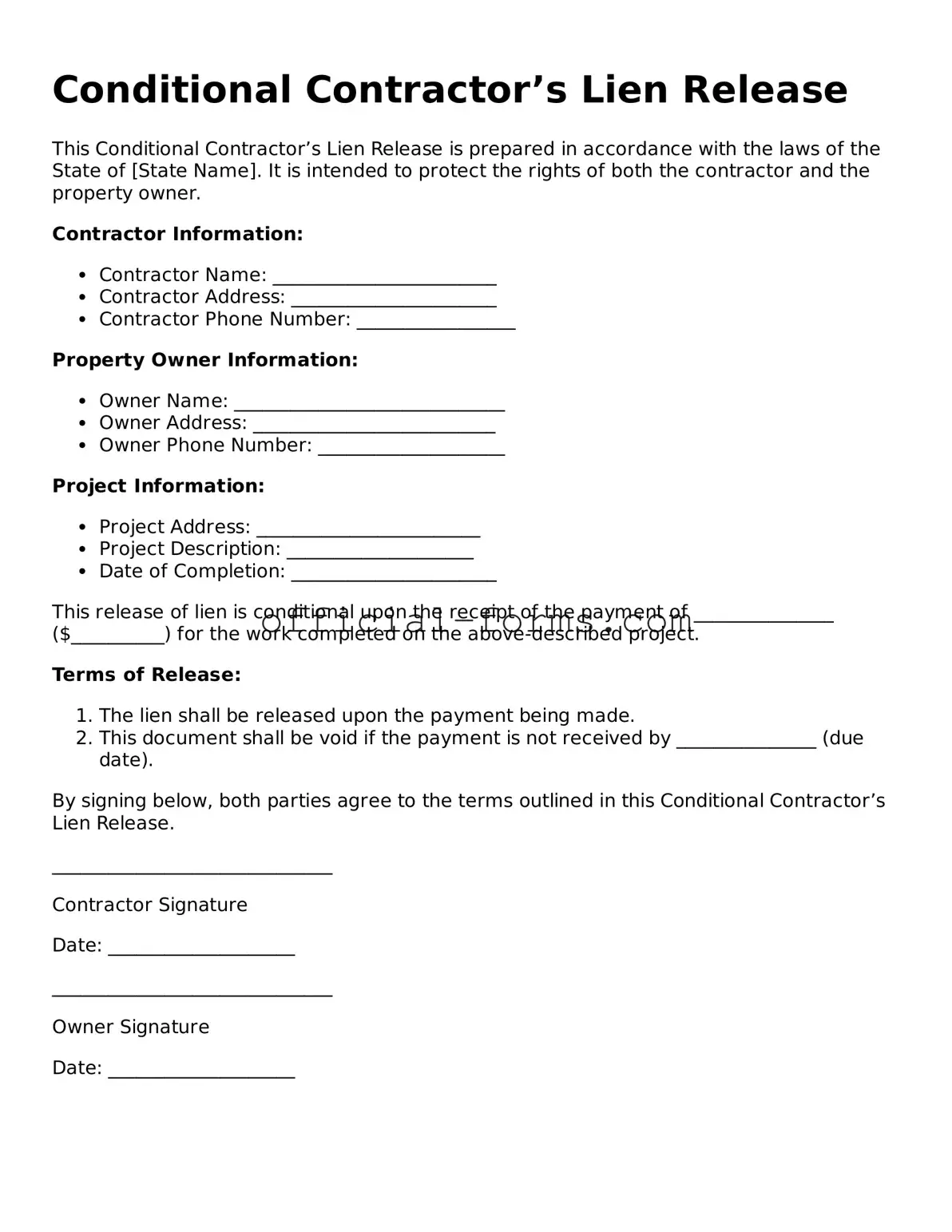The Conditional Contractor’s Lien Release form plays a crucial role in the construction and contracting industry, serving as a vital tool for contractors, subcontractors, and property owners alike. This form is designed to protect all parties involved by ensuring that once payment has been made, the contractor relinquishes any claim to a lien on the property. It establishes a clear understanding that the contractor will not pursue a lien for the amount specified, provided they receive the agreed-upon payment. Importantly, this release is conditional, meaning it only takes effect when the payment is actually received. By using this form, contractors can provide peace of mind to property owners, while also securing their right to payment in case the transaction does not go as planned. Understanding the nuances of this form is essential for anyone involved in construction projects, as it helps to prevent disputes and promotes transparency in financial dealings. Whether you are a contractor looking to ensure your rights are protected or a property owner seeking to finalize a project without the worry of future claims, the Conditional Contractor’s Lien Release form is an indispensable part of the process.
